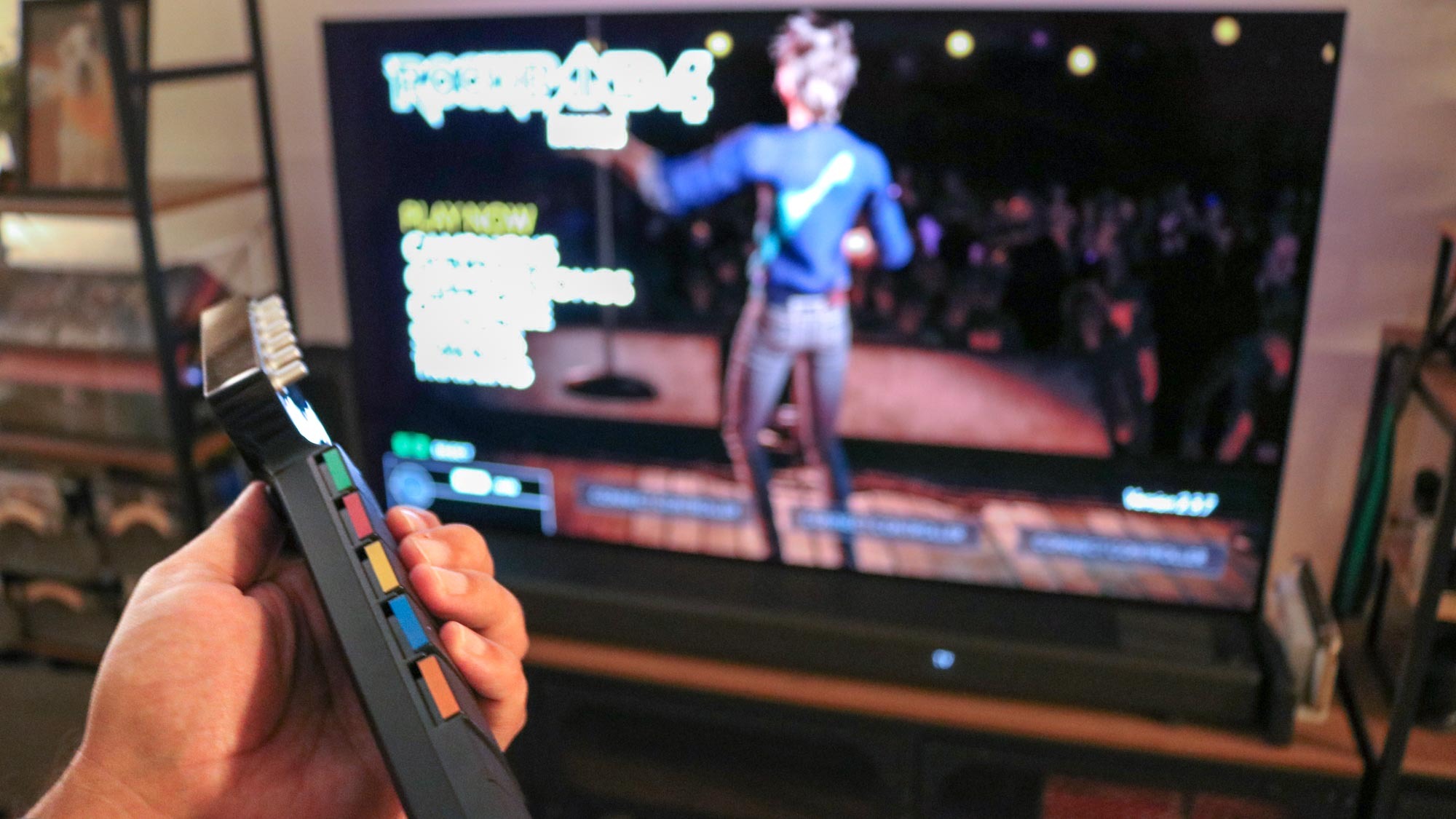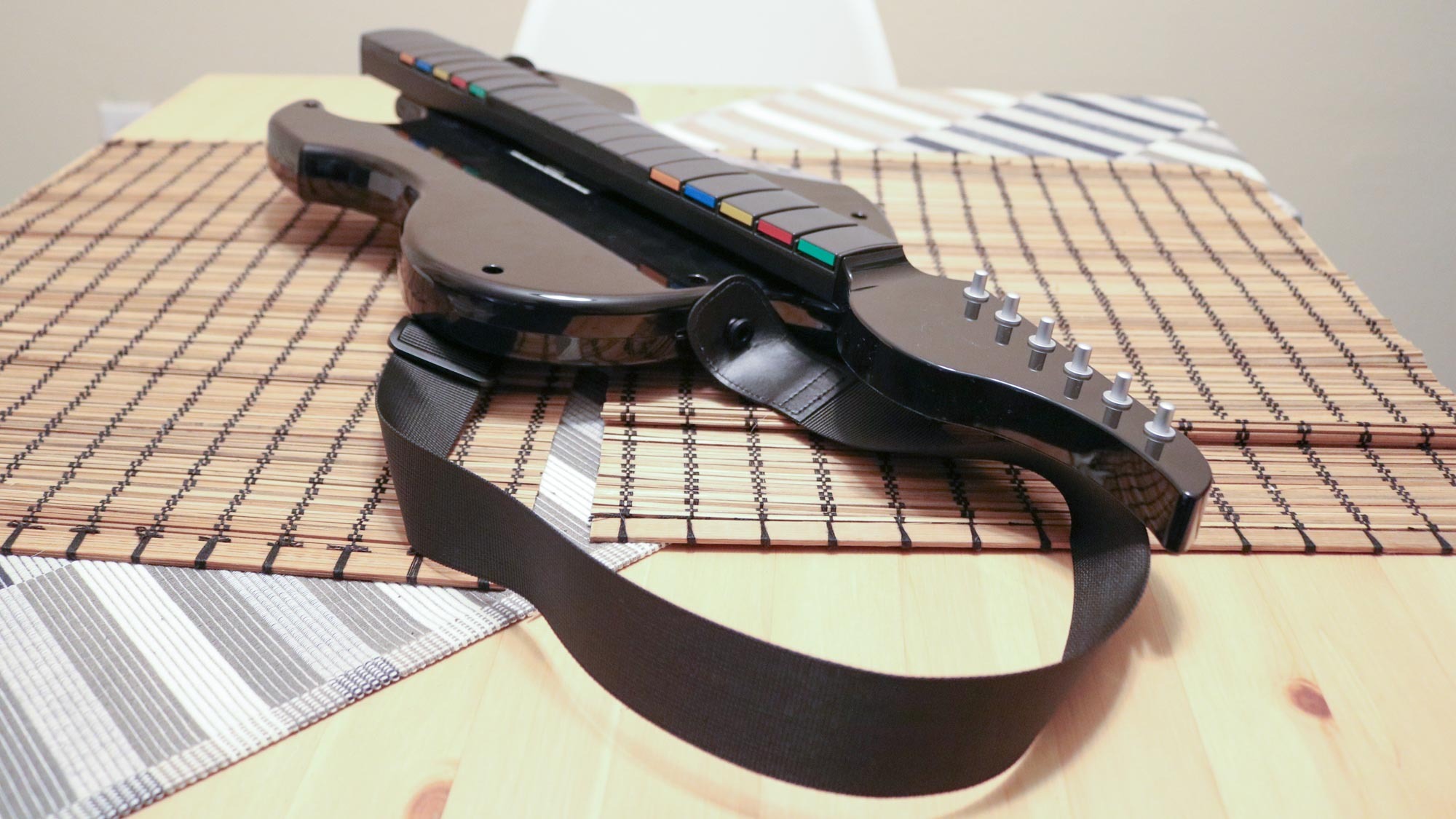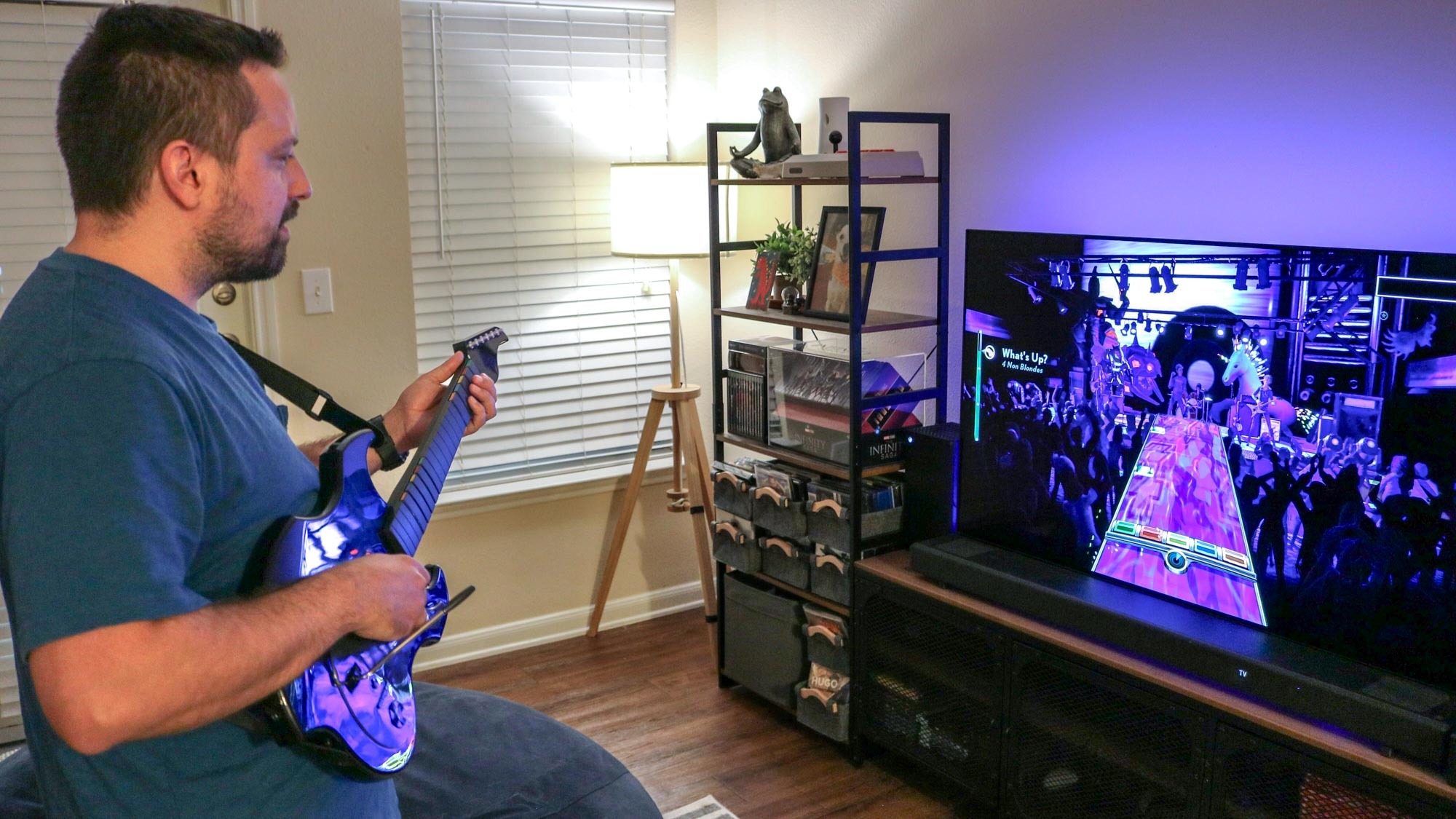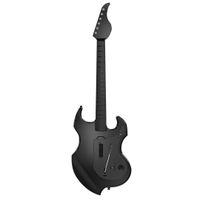I just tried this new guitar controller — and it's perfect for reliving your Rock Band glory days
Time to get the virtual band back together

At a time when it seems like almost every game from the mid 2000s is getting either a remake or a remaster, there’s one entire genre that’s been completely ignored: rhythm games.
PaRappa the Rapper for the PS1 is considered by many to be the first game to kick off this genre but Dance Dance Revolution helped solidify its popularity worldwide. From there, the Japanese title Guitar Freaks served as the inspiration for Guitar Hero and then Rock Band, two of the most popular rhythm game franchises of all time.
It’s now been nine years since the release of Guitar Hero Live and Rock Band 4 but fans of the genre are still holding onto their plastic guitars and drum kits. In fact, even used controllers are highly sought after with accessories like the PDP Wired Legacy Adapter going from anywhere from $650 to $1,500 online.
Fortunately though, there’s now a modern guitar controller for those looking to scratch their Guitar Hero or Rock Band itch without paying a fortune for used accessories. Last year, PDP released its new Riffmaster controller for PS5 and Xbox Series X/S to coincide with the launch of the third season of Fortnite Festival.
Although I never got caught up in the rhythm game craze myself, one of my closest friends certainly did. When he told me he had finally gotten a PDP Riffmaster after they were quite hard to come by at launch, I headed over to his place to check it out as there’s nothing I love more than going hands-on with a new controller.
PDP Riffmaster: $129 @ Amazon
This new wireless guitar controller is available for the PS5 or Xbox Series X/S but it also works on PC. It’s fully compatible with both Rock Band 4 and Fortnite Festival and has a 36-hour battery life. The Riffmaster also has an analog stick for navigating menus as well as a folding neck to make it easier to store/transport.
A new riff on a classic controller

At first glance, the Riffmaster resembles a lot of the other plastic guitar controllers that came before it. There are five fret buttons at the top of the guitar’s neck and five solo buttons at the bottom, a strum bar, a whammy bar, a d-pad for navigating menus and either an Xbox or PlayStation-style home button. However, the Riffmaster has a few more tricks up its sleeve and quite a bit more elegance than some of the cheaper guitar controllers we’ve seen in the past.

Like some of the newer guitar-style controllers, the Riffmaster has a rechargeable battery that’s rated for 36 hours and on the side, there’s a USB-C port for charging. While it only comes in black, the fretboard is removable, so you could sticker bomb it or even paint it if you want to give your controller a more unique look.
One feature that I completely missed when going hands-on with the Riffmaster is that it has a joystick, a first for this kind of controller. It’s located around the back where the headstock meets the neck of the guitar.
You do get a D-pad on the front too, though in my experience with the Riffmaster, I think this joystick really would have come in handy when navigating menus on the Xbox Series X. It’s also worth noting that the controller has a 3.5mm audio jack on the side for those times when you want to rock out without bothering everyone else in your household.
Easier storing and touring

If you were around during Guitar Hero and RockBand’s heyday, then you’ll likely remember just how much space all of these guitar controllers took up. During college, I remember walking into apartments and just seeing a whole corner of a person’s living room dedicated to storing all of the guitars, drums and other accessories needed for a full virtual band. Thankfully, PDP has thought of this too.
The Riffmaster has a foldable neck which makes it much easier to store the controller when you aren’t using it. You just press a button on the rear and the neck folds up. While the controller itself doesn’t come with a carrying case, I’m sure you’ll eventually be able to get one online, either from PDP itself or from a third-party seller.

For those who do intend to pack up the Riffmaster and bring it with them to a friend’s house, you won’t need to worry about forgetting the 2.4 Ghz USB dongle needed to connect it to your Xbox or PS5. The fretboard is detachable and underneath it, there’s a cutout to store the dongle like you often see with the best mice.
Not just for experts

After my buddy showed off his skills on a few tracks in Rock Band 4, it was my turn to give the Riffmaster a try. Even though I completely missed out on all the hype back in the day, it was easy to get accustomed to the controller and how it worked with the game.
I liked how much smoother the strumbar felt as a lot of the ones in previous guitar controllers were really clicky. Jumping right into full tracks proved a bit difficult for me at first, but once I played through Rock Band 4’s tutorials, I got the hang of things quickly, even if my scores were nothing to write home about.
My friend bought the Riffmaster specifically to play Rock Band 4. However, when I explained Fortnite Festival to him and how this controller was compatible with it, we downloaded Fortite and gave the game’s music-driven, rhythm-based mode a try.
Even though he had played countless hours of both Guitar Hero and Rock Band 4, it took him a bit to get used to Fortnite Festival. One thing that really impressed him though was the wide selection of free tracks available. You see, he would often buy add-on tracks for Rock Band 4 and was surprised by just how many true bangers there were in Fortnite Festival’s setlist.
Even if you’ve played Rock Band 4 and Fortnite Festival to death, the Riffmaster also works with the open-source rhythm game Clone Hero. You won’t need one of the best gaming PCs to play it either as it’s not really that demanding of a game graphically. Clone Hero has its own online versus mode too and you can even add your own songs. You will have to convert them first though.
Getting the band back together
At $130, the PDP Riffmaster isn’t the cheapest controller you can get. However, if you’ve been using an old Guitar Hero or Rock Band one, I’d say it’s certainly worth the upgrade. Not only can you play on modern consoles without any adapters but the Riffmaster has some nice quality of life features like its folding neck, 3.5mm audio jack and especially the joystick on the back.
For those gamers who are a bit too young to remember, Guitar Hero and Rock Band were absolutely huge back in the day. You really couldn’t go over to a friend’s house or apartment without seeing a guitar controller either out in the open or tucked away in a closet.
If you did play a lot of Guitar Hero or Rock Band growing up like my friend did, the Riffmaster is the perfect way to relive the nostalgic feeling of mastering a track on expert mode. However, it can also provide a much easier way to introduce your kids to one of the biggest crazes in gaming history.
While PDP only makes a guitar now, who knows, if the Riffmaster does well enough, we could see the company come out with its own take on a bass controller or even a drum set. Either way, this peripheral is just what fans of the genre have been waiting years for.
More from Tom's Guide
Sign up to get the BEST of Tom's Guide direct to your inbox.
Get instant access to breaking news, the hottest reviews, great deals and helpful tips.

Anthony Spadafora is the managing editor for security and home office furniture at Tom’s Guide where he covers everything from data breaches to password managers and the best way to cover your whole home or business with Wi-Fi. He also reviews standing desks, office chairs and other home office accessories with a penchant for building desk setups. Before joining the team, Anthony wrote for ITProPortal while living in Korea and later for TechRadar Pro after moving back to the US. Based in Houston, Texas, when he’s not writing Anthony can be found tinkering with PCs and game consoles, managing cables and upgrading his smart home.

